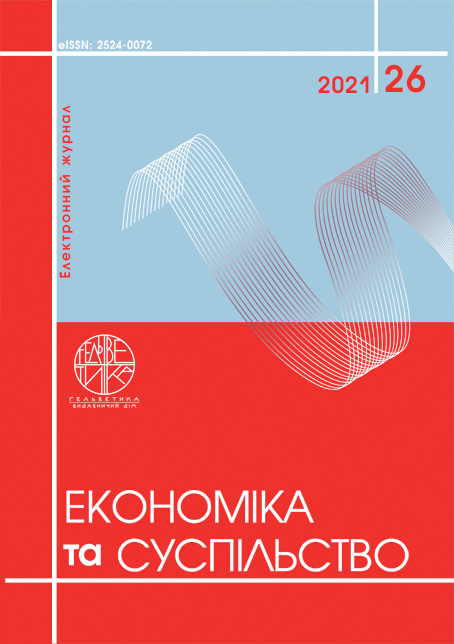CROSS-CULTURAL FEATURES OF MONGOLIAN LEADERSHIP STYLE
Abstract
The article is devoted to the study of the cultural characteristics of the Mongolian leadership style, which differs significantly from other leadership styles that are traditionally classified as Asian. In the context of globalization, leadership has become the result of a complex and multifaceted influence of various factors, including cross-cultural ones. For Mongolia, this topic is especially relevant, since the growing attention to Mongolia, as a potential market from other countries requires Mongolian companies to look for new ways to effectively manage and improve the leadership skills of managers. In Mongolia, authoritarian models and methods of leadership (the influence of Eastern cultures) still prevail, although there is a rapid transition to more democratic methods (the influence of Western cultures). In addition, there are simultaneously values of traditional, industrial and post-industrial society. Paternalism is an integral quality of Mongol, since for many centuries the nomads lived according to this principle of subordination. On the basis of Mongolian paternalistic traditions, Mongolian style of leadership was established, main features of which were the imposition of ideas and the corresponding decision-making of other people, not showing initiative and avoiding responsibility. The main features of the modern Mongolian leader are extreme individualism, since a system of personality values in which dominates; active target behavior, as a result of the dominance of traditional male values such as success, money, material values, ambition, career, competition; high degree of uncertainty avoidance, such as the desire to eliminate any ambiguity in the relationship and a low willingness to take risks; the need for constant supervision, which is inherent only in the Mongolian leadership style and distinguishes it from the Western one and is the result of paternalism; constant conformism, which consists in distrust of senior managers to their subordinates and not using the right to delegate some functions and powers to middle-level managers.
References
Laurent A. The Cultural diversity of western conception of management. International Studies of Management and Organization. 1983. Vol. 13. No. 1–2. P. 75–96.
Беляцкий Н. П. Основы лидерства. URL: http://itim.by/grodno/images/files/0115.pdf. (дата звернення: 14.03.2021).
Lewis R. D. When cultures collide : leading across cultures. Boston, London : Nicholas Brealey International. 2006. 625 p.
Миронова М. Н., Потапенко М. В. Современные тенденции экономического сотрудничества Монголии с Китаем и Россией. Известия Тульского государственного университета. Экономические и юридические науки. 2016. URL: https://cyberleninka.ru/article/n/sovremennye-tendentsii-ekonomicheskogo-sotrudnichestva-mongolii-s-kitaem-i-rossiey/viewer (дата звернення: 14.03.2021).
Lepeyko T., Gavaa B. Asian leadership model: a case of Mongolia. Economic Annals-XXI. 2017. № 165 (5-6). P. 19–22.
Курас Л. В. Монголия после Цэдэнбала: от марксизма к социал-демократии. Гуманитарный вектор. Серия: История, политология. 2014. № 3 (39). С. 80–88.
Бор А. Влияние национальной культуры на менеджмент организации (на примере монгольской культуры). Известия Санкт-Петербургского государственного экономического университета. 2012. URL: https://cyberleninka.ru/article/n/vliyanie-natsionalnoy-kultury-na-menedzhment-organizatsii-na-primere-mongolskoy-kultury (дата звернення: 15.03.2021).
Бор А. О национальных особенностях культуры управления в Монголии. Вестник НГУЭУ. 2012. № 3. С. 270–275.
Тумуртогоо Д. Монголын эдийн засгийн сэтгэлгээний туух. УБ. : Цоморлиг. 2006. 244 с.
Rarick C., Winter G., Barczyk C., Pruett M., Nickerson I., Angriawan A. Mongolia: A Cultural Portrait using the Hofstede 5-D Model. Global Journal of Management and Business Research: Administration and Management. 2014. Volume 14. Issue 9ю Version 1.0. URL: https://globaljournals.org/GJMBR_Volume14/1-Mongolia-A-Cultural-Portrait-using.pdf (дата звернення: 15.03.2021).
Laurent, A. (1983). The Cultural diversity of western conception of management. International Studies of Management and Organization. Vol. 13, No. 1–2, 75–96.
Beljackij, N. P. (2002). Osnovy liderstva [Leadership fundamentals]. Retrieved from : http://itim.by/grodno/images/files/0115.pdf (in Russian)
Lewis, R. D. (2006). When cultures collide : leading across cultures. Boston, London : Nicholas Brealey International.
Mironova, M. N., Potapenko, M. V. (2016). Sovremennye tendencii jekonomicheskogo sotrudnichestva Mongolii s Kitaem i Rossiej [Modern trends in economic cooperation of Mongolia with China and Russia]. Izvestija Tul'skogo gosudarstvennogo universiteta. Jekonomicheskie i juridicheskie nauki [Bulletin of the Tula State University. Economic and legal sciences]. Retrieved from: https://cyberleninka.ru/article/n/sovremennye-tendentsii-ekonomicheskogo-sotrudnichestva-mongolii-s-kitaem-i-rossiey/viewer (in Russian)
Lepeyko, T., Gavaa, B. (2017). Asian leadership model: a case of Mongolia. Economic Annals-XXI. № 165 (5-6), 19–22. DOI: https://doi.org/10.21003/ea.V165-04
Kuras, L. V. (2014). Mongolija posle Cjedjenbala: ot marksizma k social-demokratii [Mongolia after Tsedenbala: from Marxism to Social Democracy]. Gumanitarnyj vektor. Serija: Istorija, politologija [Humanitarian vector. Series: History, Political Science]. №3 (39), 80–88. Retrieved from: https://cyberleninka.ru/article/n/mongoliya-posle-tsedenbala-ot-marksizma-k-sotsial-demokratii1 (in Russian)
Bor, A. (2012). Vlijanie nacional'noj kul'tury na menedzhment organizacii (na primere mongol'skoj kul'tury) [The influence of national culture on the management of an organization (on the example of Mongolian culture)]. Izvestija Sankt-Peterburgskogo gosudarstvennogo jekonomicheskogo universiteta [Bulletin of the St. Petersburg State University of Economics]. Retrieved from: https://cyberleninka.ru/article/n/vliyanie-natsionalnoy-kultury-na-menedzhment-organizatsii-na-primere-mongolskoy-kultury (in Russian)
Bor, A. (2012). O nacional'nyh osobennostjah kul'tury upravlenija v Mongolii [On the national characteristics of the culture of management in Mongolia]. Vestnik NGUJeU [NSUUE Bulletin]. № 3, 270–275. Retrieved from: https://cyberleninka.ru/article/n/o-natsionalnyh-osobennostyah-kultury-upravleniya-v-mongolii (in Russian)
Tumurtogoo, D. (2006). Mongolyn jedijn zasgijn sjetgjelgjejenij tuuh [History of economic thought of Mongolia]. Ulan Bator : Comorlig.
Rarick, C., Winter, G., Barczyk, C., Pruett, M., Nickerson, I., Angriawan, A. (2014). Mongolia: A Cultural Portrait using the Hofstede 5-D Model. Global Journal of Management and Business Research: Administration and Management. Volume 14. Issue 9, Version 1.0. Retrieved from: https://globaljournals.org/GJMBR_Volume14/1-Mongolia-A-Cultural-Portrait-using.pdf


